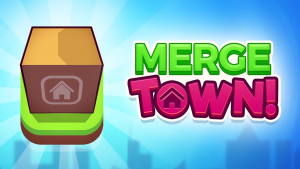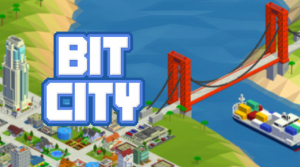Deconstructing Empires & Puzzles
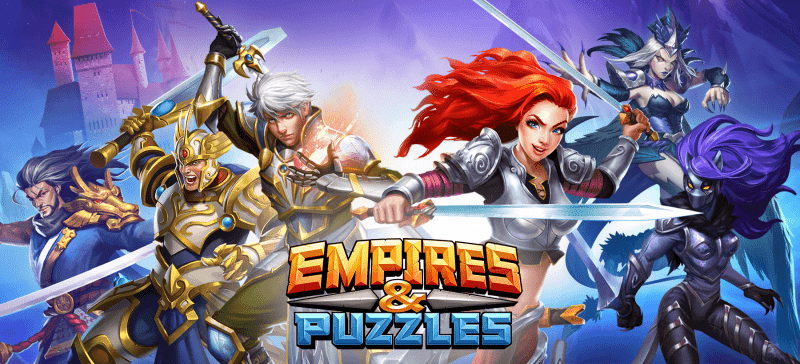
Guest Author: Niek Tuerlings / Writer at Ludocious.com.
Zynga is doing well, very well. Even more so since the first of January this year. This was the date that the Social Game giant had acquired Small Giant Studios, as was announced two weeks earlier. The main reason for this acquisition was the success of Small Giant’s hit game, Empires & Puzzles.
Only five months after being globally launched in March 2017, E&P entered the top 50 grossing games in its category (RPGs/Strategy) on the App Store. It has been there ever since. Especially the last twelve months the game has been thriving, raking in hundreds of thousands of dollars in revenue per day.
What makes this game so successful? What did Small Giant do differently from other developers like King and SEGA who have tried to successfully create a worldwide successor for Puzzles & Dragons, the first game in history to generate $1B in sales?
Guest Author: Niek Tuerlings / Writer at Ludocious.com.
Game Designer on June’s Journey at Wooga, Berlin.
Disclaimer: The article is the author’s own professional view on Empires & Puzzles. Wooga GmbH isn’t affiliated with this assessment in any way.
This deconstruction will cover:
- The game’s core loop
- Why having chosen a basic match-3 mechanic was a safe bet
- What other games have tried
- The game’s features and to which kinds of players it caters
- How time-limited offers and events are run successfully
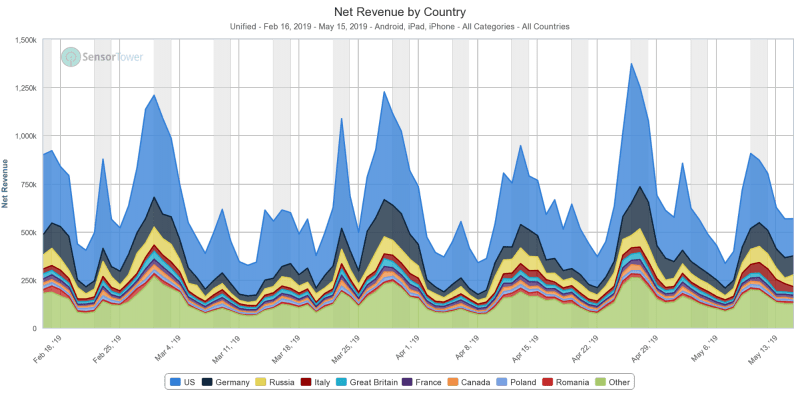
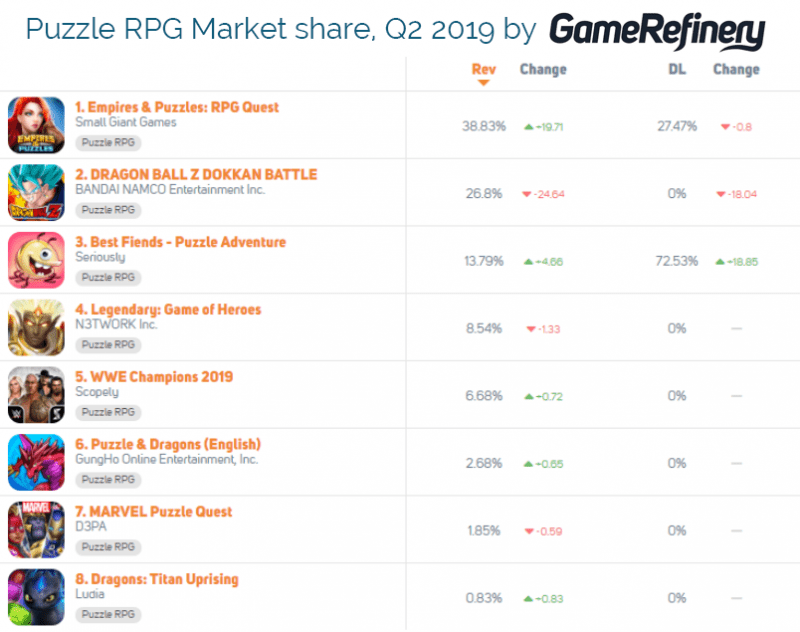
The Loop
At first glance, the core loop of the game doesn’t look very complicated:

The player’s task is to create the best possible team of five heroes to battle with. Investing in these heroes is needed to level them up, which can be done by merging other unwanted heroes into chosen heroes. New heroes can be trained using recruits, which are collected by winning battles.
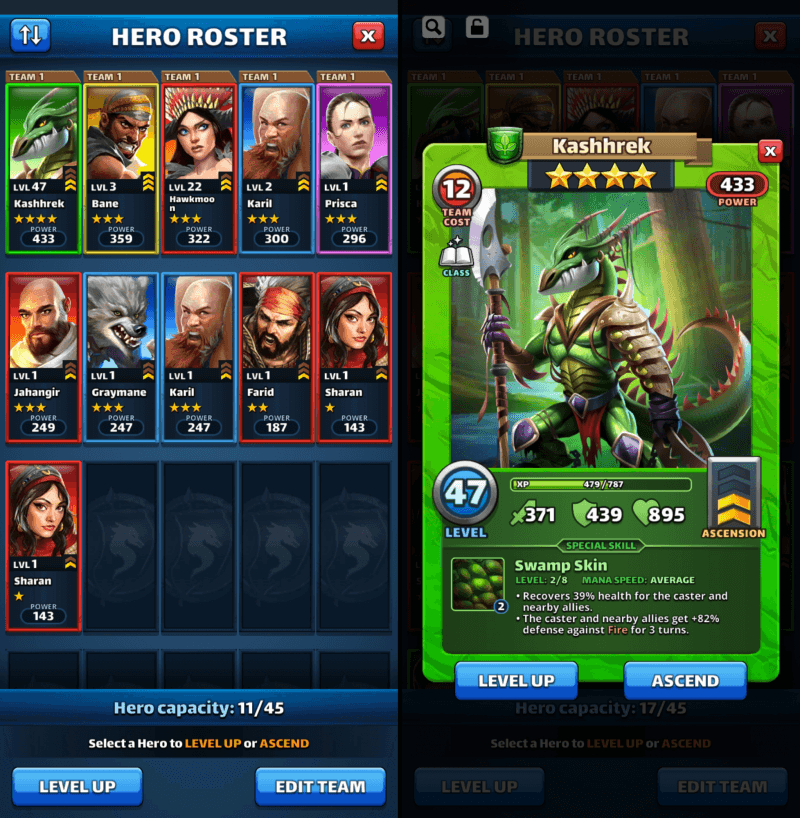
The hero roster (top row is the player’s team) and a hero’s detail page.
After carefully composing a balanced team of fighters, the player takes their party of stalwart heroes into battle, which in mobile games means the player is required to do the one and only obvious thing: matching three gems of the same color.
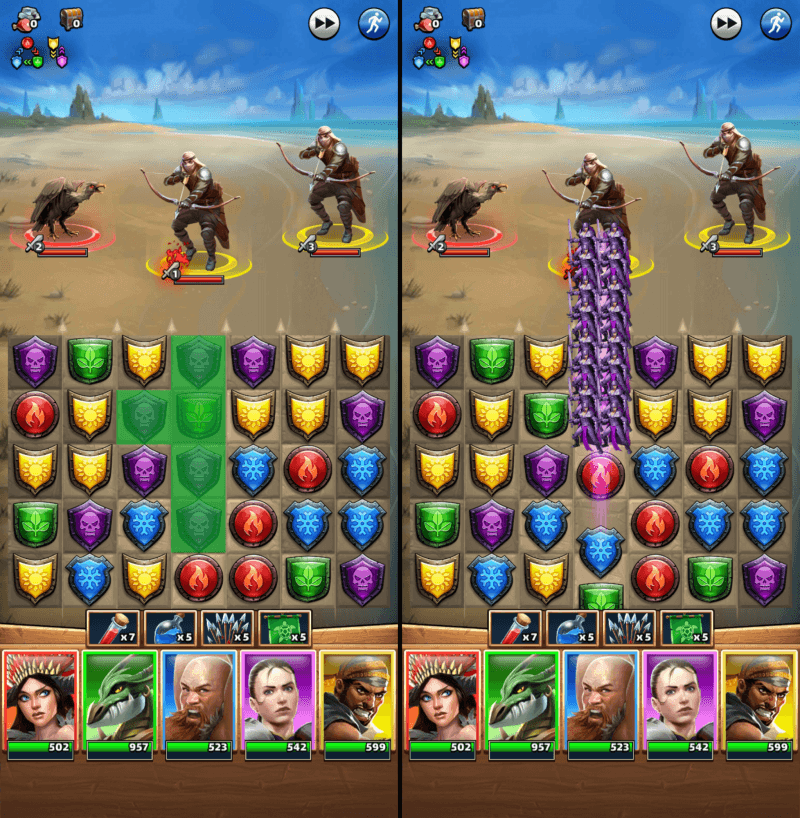
Matching gems in columns sends troops upwards to attack the enemies above.
The player’s team is positioned below the grid, the enemies are above it. Both enemies and the player’s heroes have one out of five elemental types (colors) which are effective to one another in a rock/paper/scissors-like manner. Matched gems turn into troops of the same color which then move straight upwards to attack the enemies above. This is why the position of specifically colored gems in the grid is important when considering which match to make. The designers wisely didn’t go with a 5-dimensional scheme but simply made the other two colors effective against each other to not make it too difficult to remember. Simplicity over Elegance.

Rock/paper/scissors (lizard/spock)
Matching a specific color of gem also fills up the corresponding character’s ability bar (if they are still alive). When full, the player can (without using a turn) trigger the character’s skill. Skills can be anything ranging from offensive to supportive with everything in between. When all enemies are beaten, the battle is won. The player loses when their entire party is killed.
Matchers gonna match
E&P’s core gameplay is carefully designed and balanced. Lots of additions like randomly spawning blockers, supergem combinations or stronger gems with timers could have been made but weren’t. This brings us to the game’s biggest weakness, at least if you’re a seasoned match-3 player.
The entertainment value of E&P’s core-game experience is disputable. It’s interesting enough to hook players and keep them engaged for a while but E&P’s level variation is clearly not what retains players in the long run. Every level in E&P is the same, making the matching gameplay feel tedious and slow. One battle is at least three or four waves of enemies which requires about 4 minutes when played tactically and half this time when grinding easier auto-battles. This means up to 20 minutes of the exact same gameplay, day in day out, multiple sessions per day. And this is only using the default kind of energy, world energy. E&P has two additional energy systems for the social and multiplayer parts of the game. Using these energies the player can battle world bosses or other players together, by doing what? Exactly the same match-3 levels again, but with a different enemy at the top of the screen. Mechanics like auto-win and auto-battle clearly indicate the need for players to shorten their session and “be done” with the matching component of E&P. The first three and most impactful feature suggestions on GameRefinery suggest adding core game variations like blockers and level goals.
The other edge of the sword is that trying to revolutionize match-3 gameplay is about the riskiest thing one can do when trying to make a hit game. Many others, like King’s Legend of Solgard have tried without success because they were too bold in trying to revolutionize the genre, scaring the huge segment of players who want classic match-3 mechanics.
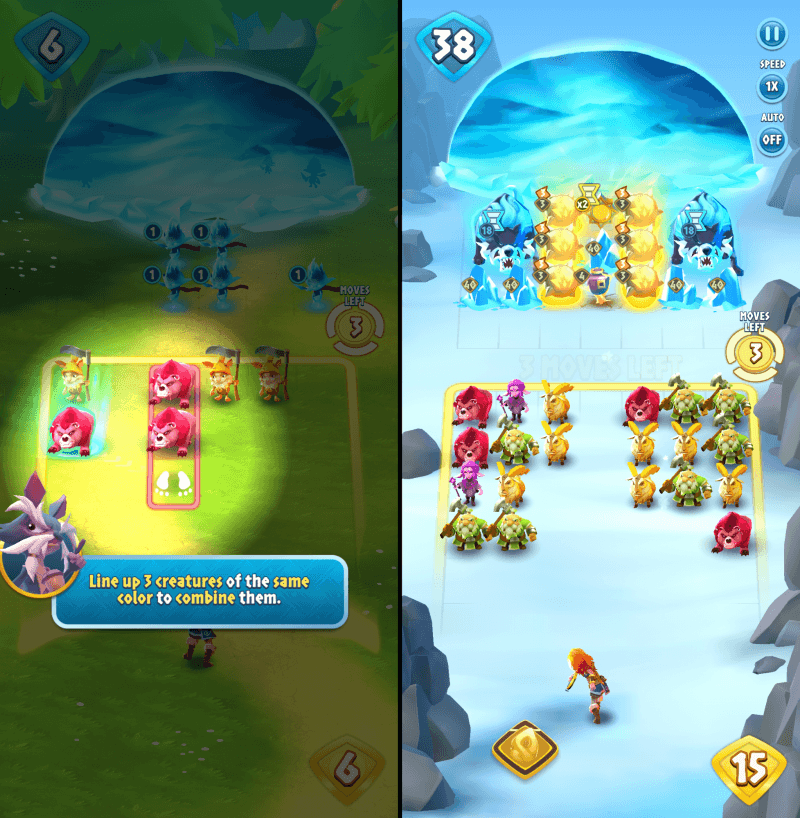
Snowprint Studios’ Legend of Solgard and its refreshing core-game. Unfortunately without much success.
I do see why it’s difficult to scale and balance the matching gameplay with all kinds of level modifiers being present. E&P’s replay value depends on playing lots of levels over different features. Having to take into account which level modifiers the player has been subjected to spanning different lines of progression would be a lot of overhead. Apparently it’s sufficient to have no variation at all, as enough players simply want to match gems.
It is unclear to me why E&P has kept most battles lengthy and multi-wave, at least for features other than the main campaign. Omitting multiple waves of enemies would keep the grind at bay. It would even could keep monetizing off auto-win tickets a possibility, albeit slightly less desirable. The game becomes way too monotonous to say it’s impossible that no one is churning because of it.
Core-game variation
In terms of lifetime revenue, one of the other Puzzle RPGs that has seen moderate success is Marvel Puzzle Quest by Bandai Namco. This game was released in 2013 and is still generating good revenue until this day, although E&P has surpassed it by a couple of factors at this point.
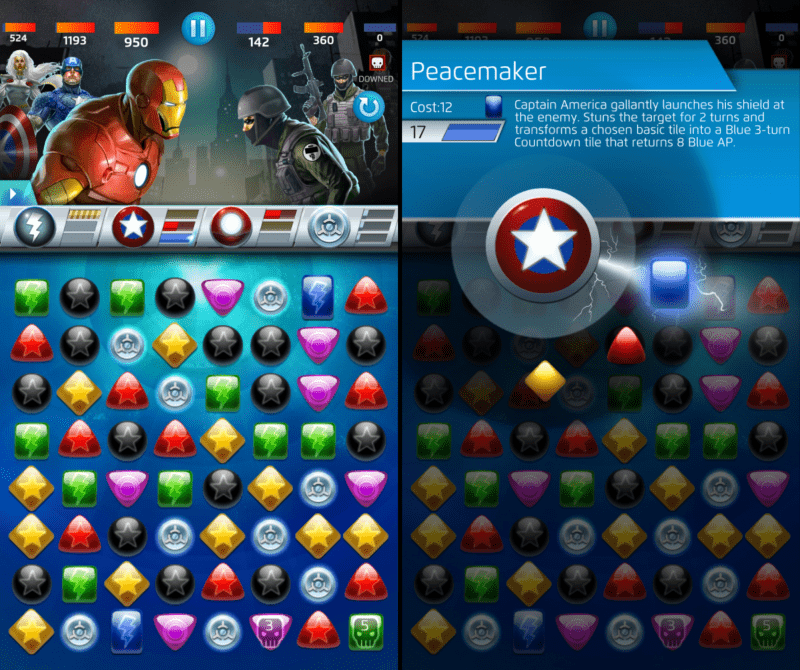
Marvel Puzzle Quest, still alive and somewhat kicking.
E&P and MPQ are similar in terms of hero-focused gameplay & collection, but MPQ’s approach to match-3 is far more complex. Each Marvel character has three elements to benefit from when matched, including one corresponding skill per element. Damage done is linked to the matched color, not to the columns in which the gems are positioned. The game also requires the player to remove specific gems that have been turned into bombs before their countdown finishes, all adding to the dynamic of the matching gameplay.
MPQ’s core-game depth makes it much more varied & enjoyable than E&P but it takes too long to be fully taught and understood by everyone. Most mobile players don’t have the commitment to dig deeper to figure out how it works on their own. Making a puzzle game doesn’t mean you can make the mechanics themselves a puzzle.
E&P’s conservative stance on match-3 has allowed them to be applicable to a wider audience but at the cost of core-game depth. Its old-fashioned matching system doesn’t involve square or synchronous matches, nor does it feature supergem combinations, further removing player agency from the matching board. Disappointingly, E&P’s successor, Puzzle Combat is in technical soft launch in the Philippines right now and the matching gameplay is a direct reskin. I can understand Small Giant’s fear of killing the golden goose, but as a player I would have loved to be presented with a somewhat modernized experience. A little flair never killed anyone, or goose for that matter.
Tickle all the Fancies
What are players subjected to before the core game starts being repetitive? What gives Empires & Puzzles its long-term retention?
When designing any game, it’s essential to analyze its (planned) feature set to try and see in which ways it is designed to keep as many different types of players as engaged as possible. Almost every studios with top-grossing games tries doing this as well as possible. Good examples of this extreme feature-diversity are Kabam or FunPlus and their top games, MARVEL Contest of Champions and Guns of Glory respectively. E&P does the same, making it one of the most complete games in the Puzzle RPG genre.
Lots of research has been done to define possible player motivations. I won’t go in-depth here since many others have explored this psychological terrain in much more detail but I will use some existing taxonomies like the Gamer Motivation Model from Quantic Foundry to illustrate my point. Their model is suitable because it is based on extensive research on player psychology, all without specifying a distinct platform or genre.

Quantic Foundry’s Gamer Motivation Model, which one are you?
Strategizers
Any game that makes its players “feel smart” will successfully gratify strategizers and keep them engaged. Strategizers are the best catered-to group of players in E&P. Three main features of the game heavily depend on the player making the right choices. The first one is the essence of the meta-game; the player’s base.
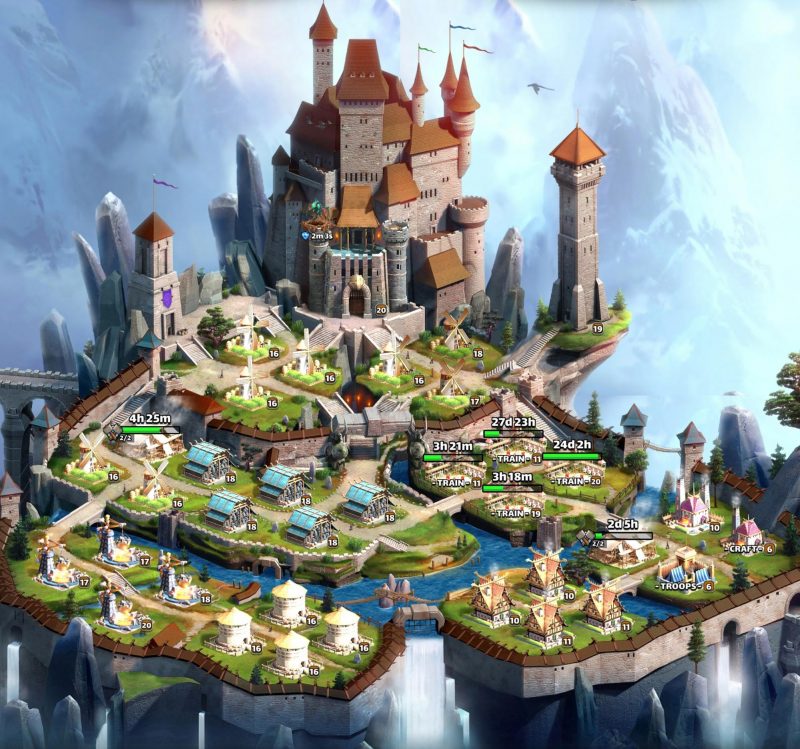
A (very progressed) player’s base.
Base building
The base can consist out of 10 different kinds of buildings which can be placed on its 34 building plots. Mostly, the player will use these plots to create buildings that increase their food & iron production or storage. Iron is used to upgrade all buildings, including the ones that ultimately gate the player by limiting the amount of food they provide to upgrade their heroes. Filling up the entire base with fully upgraded buildings takes years of upgrades.
How many buildings of a kind to construct and in which order can be strategized on but not to a large extent. As more of the base’s plots get unlocked, the player gets more possibilities to either upgrade their buildings or build new ones. The game’s resource pool is split up between resources gained from winning battles and resources collected from buildings. The first part is gained by playing the core game (limited by the player’s engagement) and the other part is a steady and consistent flow, making sure also less engaged players are able to progress at a specific pace. The choice which buildings to build gives the player just enough feeling of agency over that latter part of resources. It’s a fenced playground where the player has space to feel smart about their choice and positioning of buildings.
Hero collection
The most influential feature of the game that gives the strategic players the most food for thought is the ability to compose a team of heroes they like. At the time of writing, the game contains 182 heroes spanning 5 rarity levels and 10 classes. Most heroes (especially the more rare ones) have specific skill sets, making them truly unique. Some heroes have skills that influence only adjacent heroes, making the placement order of heroes in the party a factor to take into account as well. The way E&P heroes function in the core game is most certainly one of its biggest differentiators.
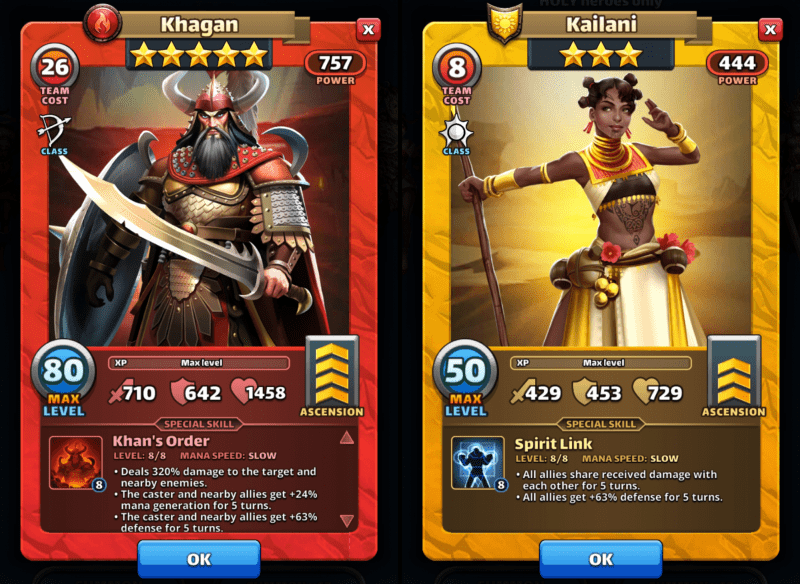
Examples of different hero skills
The third strategizer feature to highlight is one that speaks for itself but shouldn’t be forgotten. The game’s core-game provides the biggest chunk of challenge. Choosing which match to make where heavily influences a battle’s outcome.
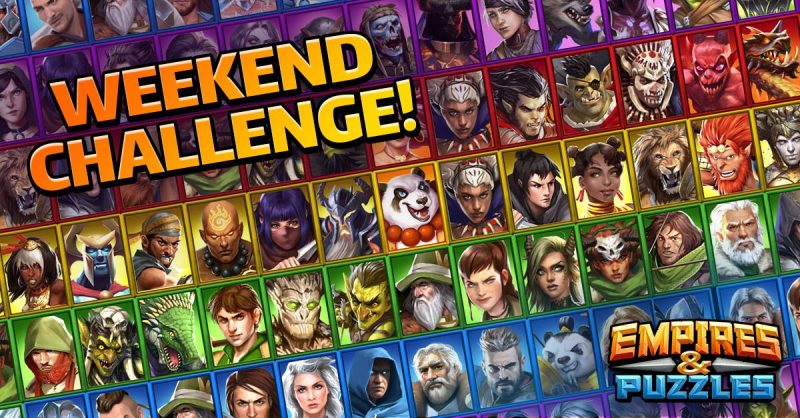
Heroes: the way E&P scales content
Completionists
Completionists have a lot to do in E&P. There is the main campaign that takes care of the player’s long-term progression. It’s not much else than a saga map with chains of levels that increase in difficulty so the player has a measurement of how far and fast they are progressing.
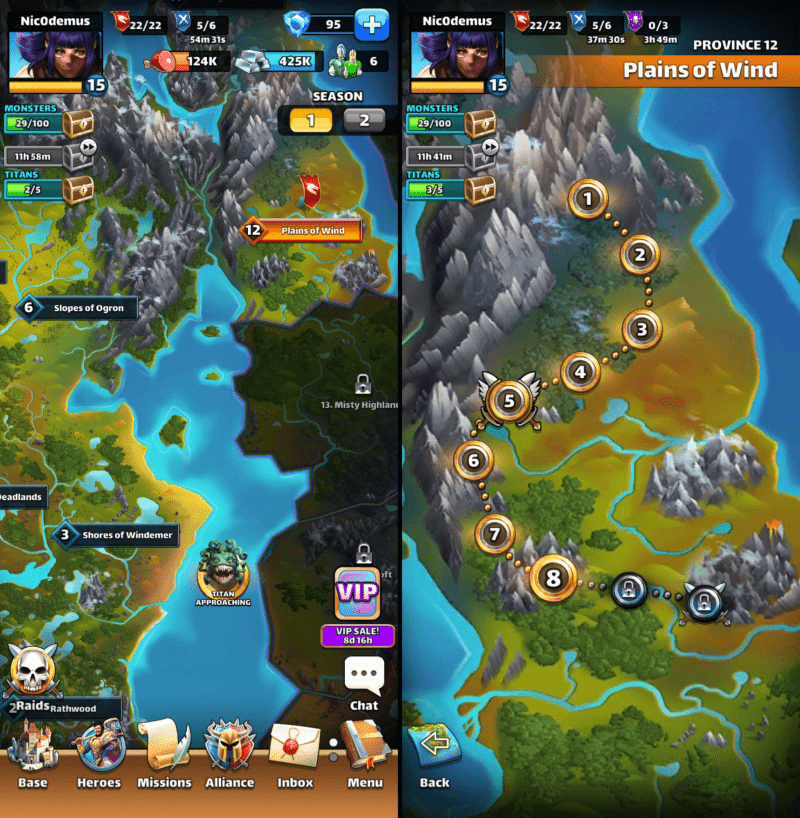
The (saga) map. Overworld on the left, zoomed in province view on the right.
The game offers an elaborate quest system that has different branches of time-limited quests, providing more bite-size objectives to complete. Every quest line caters to different player needs within the feature. Players can grind for specific resources, recruits or class-specific power-ups.
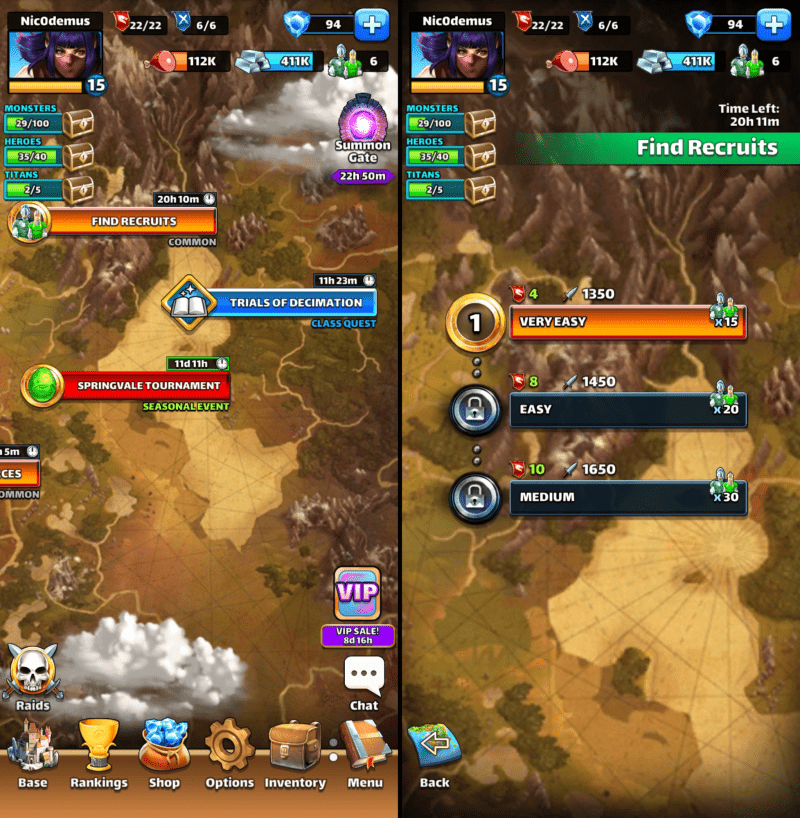
Time-limited quests offering short-term progression.
Collectors
As mentioned, the game contains a lot of heroes to be collected. Heroes of the highest rarity are extremely difficult to acquire because of the game’s relatively wide gacha system. Any time a hero is either summoned or trained, the player gets a random drop. The cheapest, earliest summons and trainings only reward common and uncommon heroes. Later in the game, or during seasonal events, the player unlocks more chances to draw rare, epic and ultimately legendary gacha. Even though the majority of the heroes in the game are legendary (68) or epic (46), drawing gacha practically always rewards common and uncommon heroes. Even the most expensive summon (available only by paying hard currency) provides just ~25% chance of getting an epic hero while legendary heroes drop 2.5% of the time.
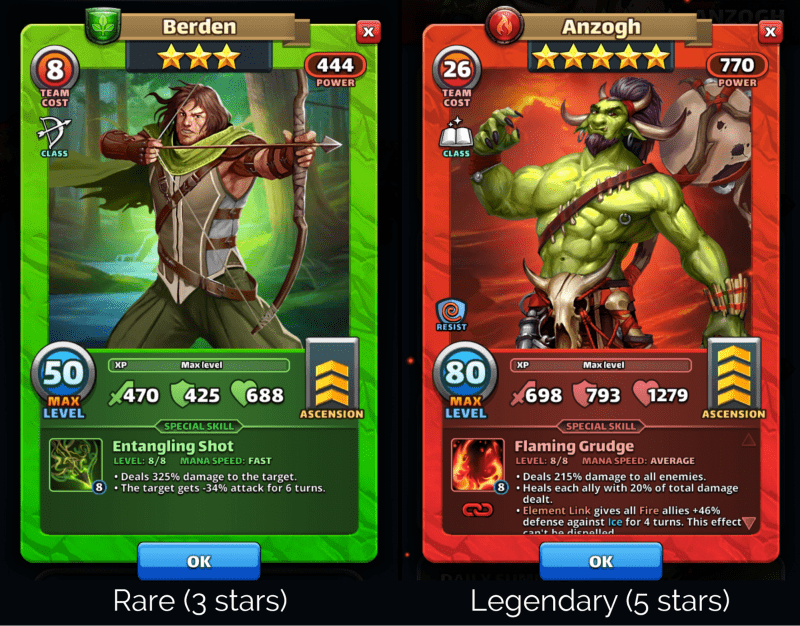
Hero rarity comparison; rare (3/5) on the left, legendary (5/5) on the right
The higher a hero’s rarity, the higher its potential. Less rare heroes can’t scale as much, have less interesting skills and have a lower base power. As mentioned, Small Giant scales E&P’s content by adding heroes (that all have to be balanced), which is the reason why acquiring the strongest heroes is such a rare event. Essential to creating an engaging gacha is desirability of its collectables. The need for specific heroes to compose the perfect team is a perfect and meaningful link to the core game.
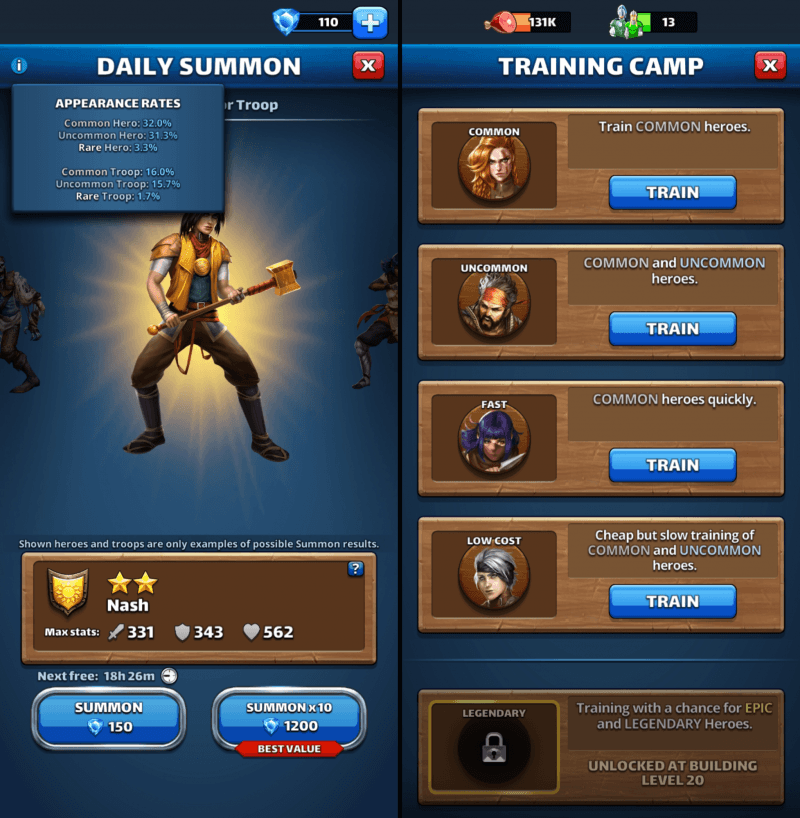
Hero summoning and training (epic and elemental summons not pictured).
But what happens when the player has found their favorite team? What stops players from using the same team throughout the entire game? When starting specific quests and trials, the player can only use one class of hero, like Paladin for example. Every class has specific talents that can be configured when a player’s hero reaches max level. The player also benefits from having a more diverse roster of heroes in the competitive parts of the game, where specific heroes have the potential to counter others more or less efficiently. E&P only makes the player aware of hero classes much further in the game when their heroes are fully leveled up and ascended. By doing so the game opens up a whole new reason to collect different heroes when the player needs it.
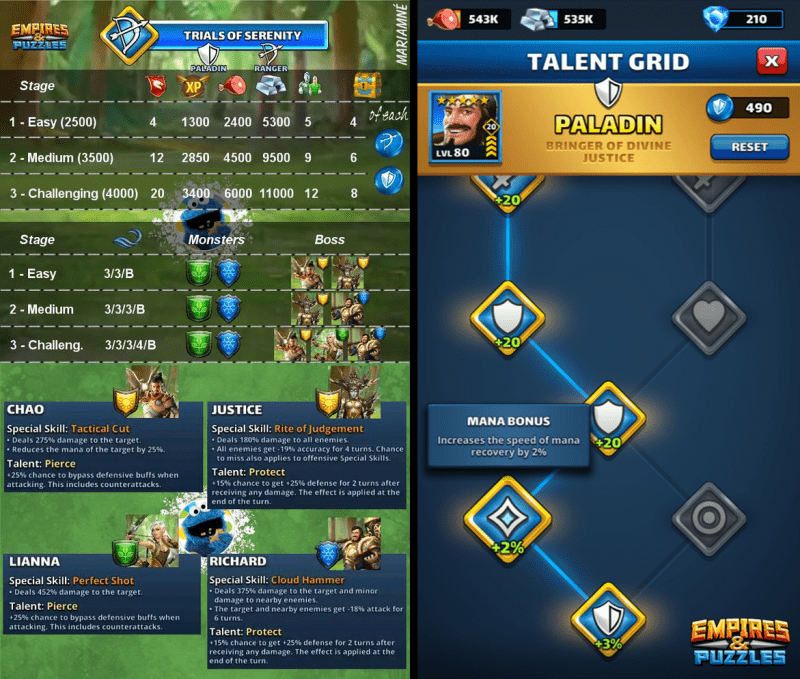
Tactical breakdown of Trial of Serenity (fan made) and a character’s talent grid.
Socializers
E&P gives its players the possibility to form Alliances; groups of players able to chat, organize and work together on common goals. These common goals can include collectively attacking one very strong Titan on the map (PvE) or fighting a War with another alliance (PvP).
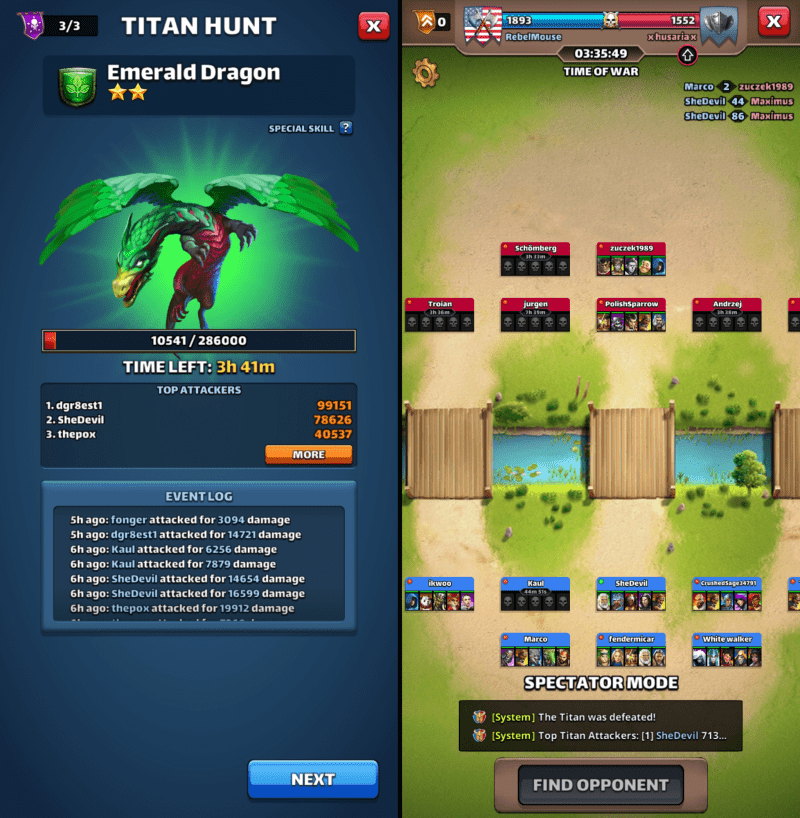
Player-versus-Environment & Player-versus-”Player”
In War battles, players can pick opponents with similar strength from the other alliance and attack their team. The battles are not real-time, the player is matched up against the other player’s AI-controlled team. Fighting wars or titans does not use the same energy as the other features, this is smart so that the player doesn’t have to choose between being social or grinding the single-player features of the game.
Competitors
As mentioned above, social players can work together to try and eliminate players of another alliance in the War feature, but there is also a single player combat feature called Raids. This is the main competitive feature of E&P. Players get matched with another player’s team to fight an AI-controlled battle against it. It would be much cooler to fight real-time against a human player, but for this to become reality, lots of technical and synchronicity issues will undoubtedly have to be tackled, not to mention it’s probably too big of a risk at this point.
The battle awards trophies to the winner and deducts some from the loser. Trophies are tallied into a global leaderboard for single players, as well as cumulative trophies of alliances.
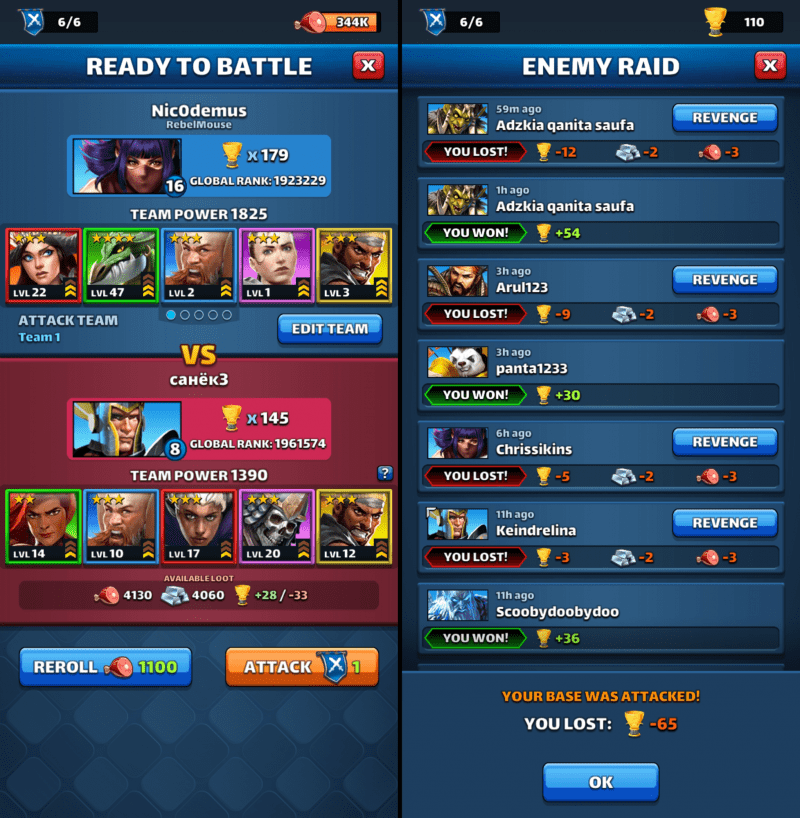
The start screen before a raid battle and the screen that pops up when starting the game after being attacked.
When looking at the motivation model posed earlier, it’s clear that E&P caters heavily to the Social, Mastery, Achievement and Creativity categories. The other two (Action & Immersion) are generally not categories that thrive on mobile platforms anyways, which means E&P is practically the most complete game it can be.
Having handled all this, the game’s loop suddenly looks a bit more interesting:

A more thorough look at the game’s loop. (excludes social & compounds quests with battles)
Looking at E&P’s entire feature set, one can conclude the game provides features for everything and everyone. Strategizers, Completionists, Collectors, Socializers and Competitors alike are kept engaged at the time they have become (too) comfortable with the core-game. The coherent way in which all of these features are built to feed into the game’s thrifty hero gacha is the reason for E&P’s long-term success.
Merchandising
Having created such a complete game, the last thing to do is market and sell it for the right price:
Driving First Conversion
The ease of making purchases in a game can be directly compared to a person’s brain and the neural pathways that are created within. Doing something for the first time is by far the most difficult. Recurring events are much easier to perform and justify. For this reason, converting a player’s initial purchasing caution into necessity is pivotal to ‘unlock’ their potential Lifetime Value.
The way E&P converts players is ruthless and childishly simple. The player’s building construction timers ramp up with every upgrade until soon the player has to wait more than 10 hours to sometimes even days for a building to complete. But buildings need to be upgraded a lot. Every building has about 20 stages which means the player has to start these lengthy upgrades about 700 times to reach the end of content. This would all be not such a big deal if they would be able to upgrade multiple buildings at once. When trying to, the game throws the following pop-up:
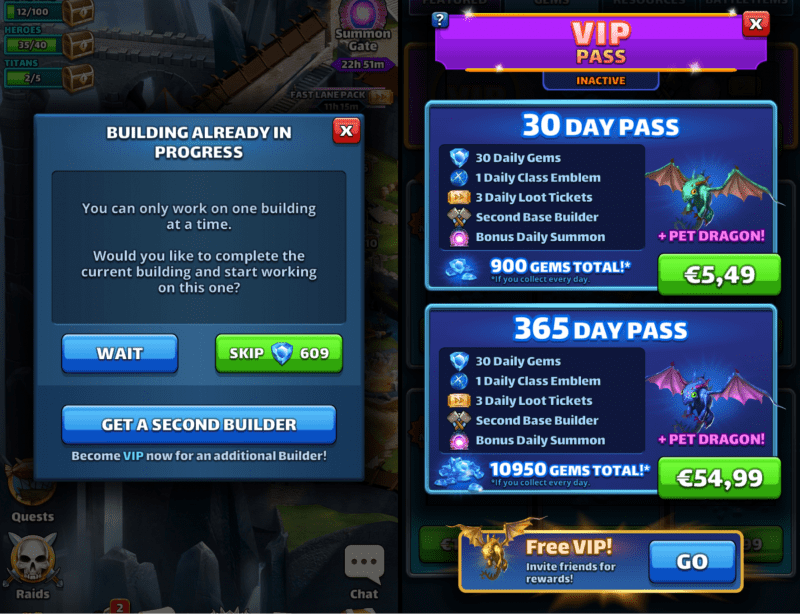
That derpy pet dragon though.
When tapping the button to get a second builder, one is presented the VIP pass. For any player with a bit of sense how long it takes to complete just one build timer, this 30 day pass is a no-brainer. That second builder alone is what anyone would want since it effectively doubles construction efficiency. On top of that comes a good amount of gems and even more! VIP memberships are an amazing way to retain players since they pre-purchase rewards they won’t even get when failing to log back into the game. Linking it to something as desirable as that second builder to convert is a genius move.
In case the builder scenario didn’t work, the game continuously offers time-limited conversion deals to players. These deals all advertise something desirable for a low real-money-purchase in combination with gems. This way the player gets their desired product and additional freedom to spend currency the way they prefer.
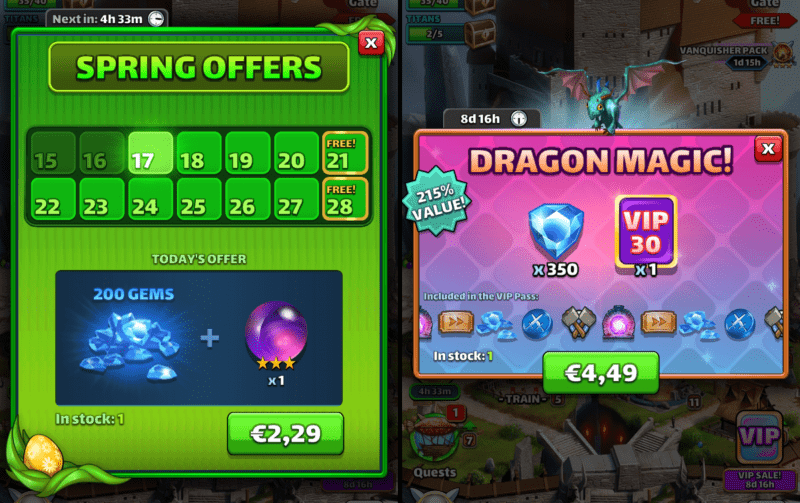
A healthy reward space provides infinite possibilities to keep selling goods.
Retention through Live-ops
On top of the VIP membership lots of players will have felt inclined to buy, there are lots of reasons to check back into the game. The daily free hero summon is probably the most tempting one. On top of that, everything else has a timer. Quests reset at different rates, huge amounts of building resources need to be collected every couple of hours, a titan spawns every day and guild wars need attending to. On top of all that the elemental summon provides a time-limited chance to draw an element-specific gacha every 30 hours, which is very tempting if your team’s 5th hero isn’t optimally synergizing and you have some gems saved up.
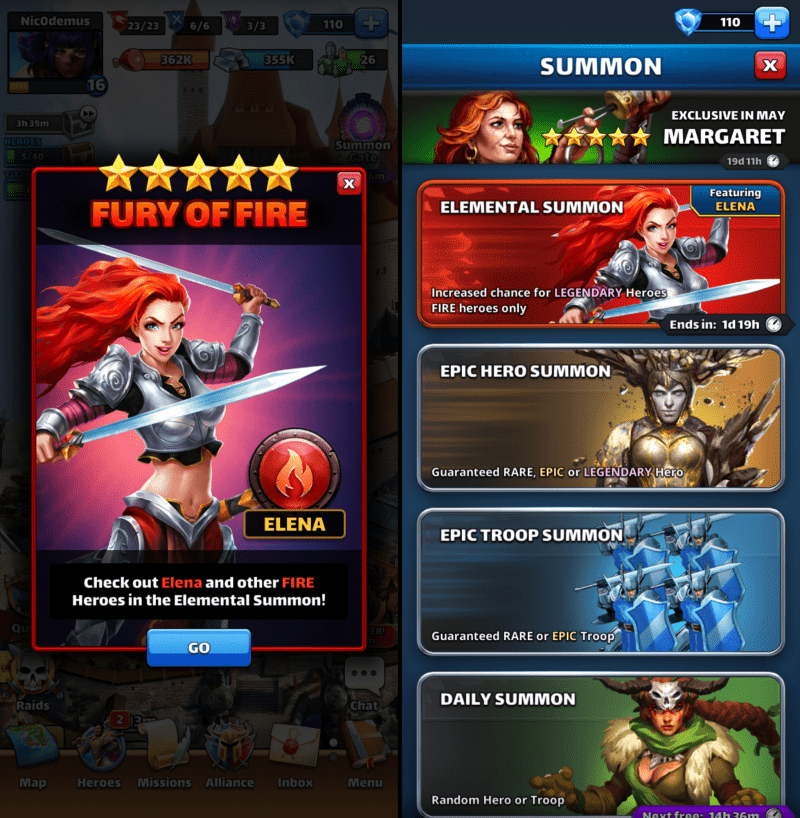
Everyday I’m summonin’
Since so much is happening and the game’s three different energies all replenish at different rates it’s very tempting to quickly check back into the game to see if one of these countdowns hasn’t reset in the meantime. When this game hooks you, it hooks you good.
Monetization
The game has enough to offer for players with deeper pockets as well; themed packs for rushy players (the fast lane pack), packages to buff specific heroes or elemental-themed sales are a common sight in the shop. Featured deals come and go and have a prominent placement in the shop.
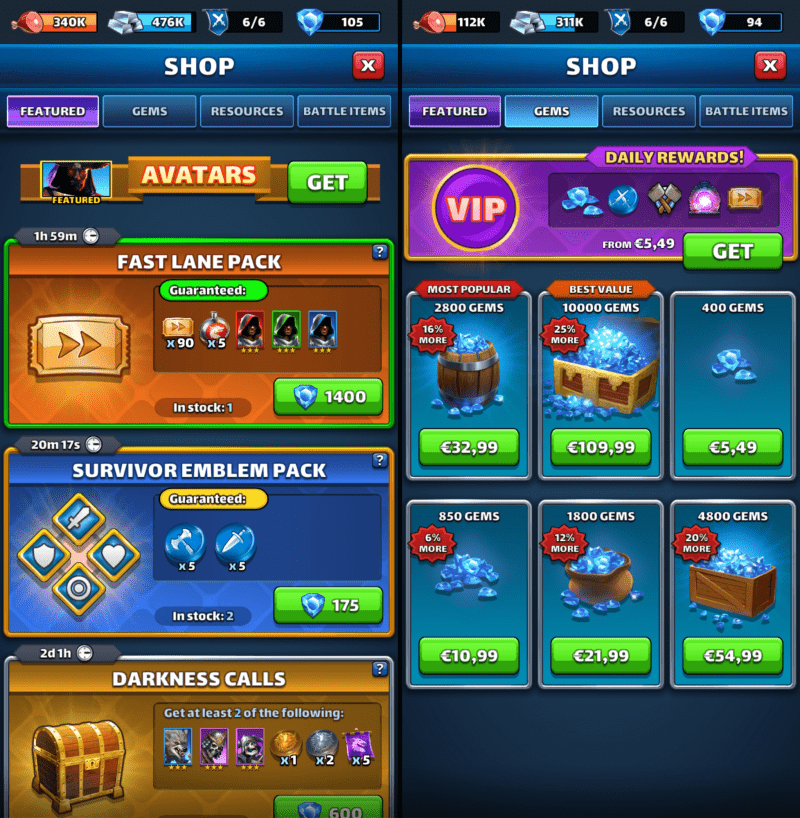
Make it rain
There is one feature related to the game’s monetization that can easily be ignored: the incentivized ads. They seem tacked on later as they are entirely outside the core loop. The rewards are also slim pickings: 2 diamonds and a weapon of which I don’t see its immediate use don’t provide a high “wow” factor.
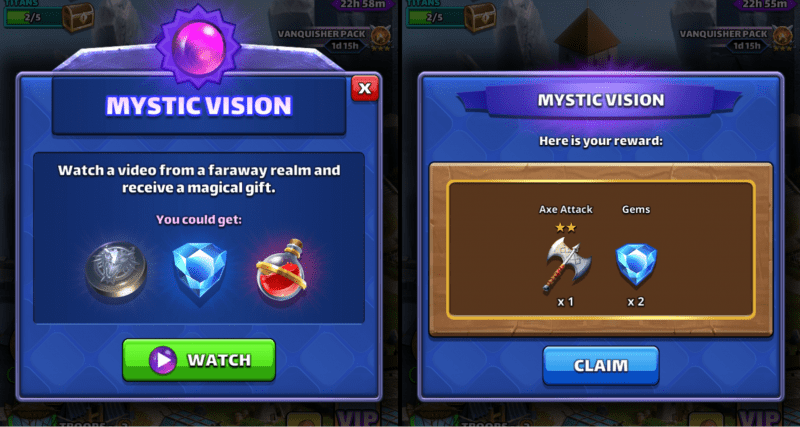
Adds, not ads
It would be more alluring to offer another gacha draw in the daily summon in exchange for watching an ad since it provides a reward that can immediately be used. Providing a reward that in most cases will just be used to ‘save up’ is less effective. On top of that, adding the chance of finding a rare hero to the equation should get more people excited.
Conclusion
Empires & Puzzles is an example to be studied when working on your next hit game. Wrapping your head around the intricate balancing of their systems and feature set might take some effort but it’s surely worth the trouble. Studying the quest, sales and event cadence makes it look so easy while in fact one shouldn’t forget a game with substantial economic depth is required to be able to replicate what E&P manages to offer.
In summary, these three things are what E&P makes it the success it is:
- An extremely rich feature set catering to all different types of players
- A highly scalable & desirable collection with ultra rare content that links back adamantly to its core gameplay
- Its irrefutable conversion offer linked to its rewarding VIP system
After having seen how this game has been performing and analyzing their core success factors, my big question is, who can do this better?




